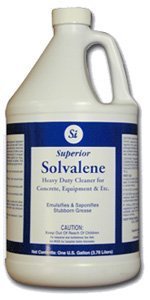Just to reiterate, here is a scope trace showing the probable reason that the monitor won’t sync correctly:

When the HSYNC signal is low, the beam of the CRT is drawn to the left of the screen so as to start scanning out a new line left-to-right. To an LCD’s controller or the DVI gizmo we have been discussing, the HSYNC low pulse is a hint that the the next video line is starting soon.
Issue here is that HSYNC stays low for way too long such that the HSYNC low pulse overlaps with the first 1/4 of the active video portion. So I’ll apply the high-pass RC filter as on the Power-R gizmo to limit the HSYNC low pulse width. Then hopefully one of my monitors will sync despite the 22.25 kHz HSYNC frequency (corresponding to the 342p resolution) being lower than the specified minimum of even the best multisync displays like the NEC LCD1860NX and HP L2335. They all officially only work with a > 30 kHz line rate corresponding to 480p or higher. They do sync to LCs at 512x384 though which have a similarly low like rate of 24.48 kHz. So with luck, the HSYNC pulse limit circuit will work with the monitor and we can proceed with the WarpSE debugging.
When the HSYNC signal is low, the beam of the CRT is drawn to the left of the screen so as to start scanning out a new line left-to-right. To an LCD’s controller or the DVI gizmo we have been discussing, the HSYNC low pulse is a hint that the the next video line is starting soon.
Issue here is that HSYNC stays low for way too long such that the HSYNC low pulse overlaps with the first 1/4 of the active video portion. So I’ll apply the high-pass RC filter as on the Power-R gizmo to limit the HSYNC low pulse width. Then hopefully one of my monitors will sync despite the 22.25 kHz HSYNC frequency (corresponding to the 342p resolution) being lower than the specified minimum of even the best multisync displays like the NEC LCD1860NX and HP L2335. They all officially only work with a > 30 kHz line rate corresponding to 480p or higher. They do sync to LCs at 512x384 though which have a similarly low like rate of 24.48 kHz. So with luck, the HSYNC pulse limit circuit will work with the monitor and we can proceed with the WarpSE debugging.
Last edited:


